"As seismologists gained more experience from earthquake records, it became obvious that the problem could not be reduced to a single peak acceleration. In fact, a full frequency of vibrations occurs." -Charles Francis Richter
You've all been around long enough to be familiar with the severe damage that earthquakes can cause, rattling and cracking the ground, shaking down buildings, and creating catastrophic tsunamis tidal waves. In short, the largest ones that occur in the wrong places will cause billions of dollars worth of damage and will kill thousands of people.
As you may well imagine, the Earth is hardly the only world that is geologically active like this, spontaneously and naturally quaking. Other planets like Venus have quakes, the Moon has them, even stars like the Sun have quakes!
Of course, all of these quakes release large amounts of energy; the quakes on the surface of the Sun release somewhere in excess of 40,000 times the energy of the 1906 San Francisco quake, one of the most destructive in recorded history! But what you might not realize is that all of that energy has to come from somewhere, and the naïve explanation -- tectonic plates colliding -- simply won't do.
Plate tectonics tells you where earthquakes are most likely to occur, and the geophysics of the Earth's crust tells you the different types of faults that cause these quakes, but neither of these tells you where the energy for these quakes comes from.
There's a hint, though, if you've ever tried spinning with your arms out, and then brought them in.
There are only a few quantities in this physical Universe that are fundamentally conserved, and one of them happens to be angular momentum. Angular momentum, in plain English, is the product of your rate of rotation (known as your angular velocity) and how your mass is distributed (known as moment of inertia). When you bring your arms in, your moment of inertia goes down, and hence -- in order to conserve angular momentum -- your rate of rotation needs to go up!
Well, guess what we notice about the Earth after each-and-every measurable earthquake?
By just the smallest of amounts, the rotational period of a day shortens. For example, the 2011 Japan earthquake (including aftershocks) shortened the day by 1.8 microseconds, the 2010 Chile earthquake shortened the day by 1.26 microseconds, and the 2004 Sumatra quake shortened the day by an astounding 6.8 microseconds!
These are tiny numbers, of course, considering that we lose about 14 microseconds from the 24-hour-day each year just due to tidal friction from the Moon-Earth-Sun system, but it's measurable nonetheless. And since angular momentum is conserved and the Earth's angular velocity changes, that tells us that with each earthquake, the Earth's moment of inertia must change, too.
But unlike you when you bring your arms in, the Earth has no external source of energy to cause this change-in-configuration. There's only one place for this energy to come from: gravitational potential energy!
The Earth, as you well know, is (naturally) made up of all the stable and quasi-stable elements in the periodic table, which includes all the elements from 1 (hydrogen) to 94 (plutonium), exempting the three unstable elements along the way.
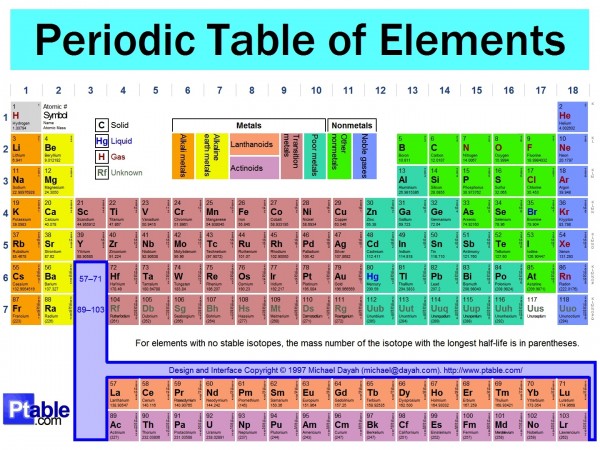 Image credit: Michael Dayah, of http://ptable.com/.
Image credit: Michael Dayah, of http://ptable.com/.
You can imagine an Earth quite unlike the one we enjoy today: one that was perfectly segregated by element in concentric layers, like some kind of atomic onion. On average, the most massive stars in the Universe do a remarkable approximation of this, and so you can imagine arranging the Earth in a perfect onion, with a tiny core of plutonium, enveloped by a thick spherical shell of uranium, in turn enveloped by protactinium, thorium, and so on.
Like I said, ultra-massive stars do something very close to this, and to some extent, so does Earth, already.
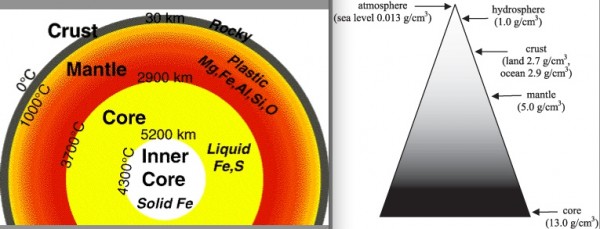 Image credit: http://cde.nwc.edu/ (L) and McGraw-Hill (R).
Image credit: http://cde.nwc.edu/ (L) and McGraw-Hill (R).
But we're not perfectly layered; it's not even close. Each big earthquake that causes an ~1 microsecond speed-up in the Earth's rotational day is the equivalent of moving some ten billion tons of uranium from the Earth's surface all the way to the center of the inner core! Of course, real earthquakes involve a much slighter rearrangement of much larger amounts of material: usually quintillions of tons of mass moving by just centimeters.
Still, each time we have an earthquake, that's one tiny step closer to our ideal density configuration!
So where does an earthquake's energy come from?
From the gravitational potential energy stored in the elemental configuration of the Earth itself! And when an earthquake occurs, that's the Earth slightly rearranging its mass to lower its moment of inertia, increase its angular velocity, and to turn that gravitational potential energy into some very frightening and destructive kinetic energy!
 Image credit: the 2009 Haiti earthquake, via http://peaceandloveinternational.com/.
Image credit: the 2009 Haiti earthquake, via http://peaceandloveinternational.com/.
As the Earth continues to cool, shrink, and radiate its heat away, more rearrangements like this are inevitable.
For the intricacies of earthquakes and the Earth's interior, you need to understand an awful lot about geology and geophysics, but for the basic physics of earthquakes, and where they get their energy from? It's as simple as rearranging atoms, and bringing the heavier elements closer to the core!
- Log in to post comments

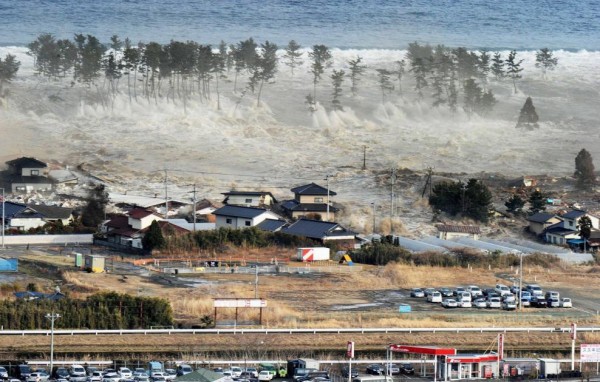
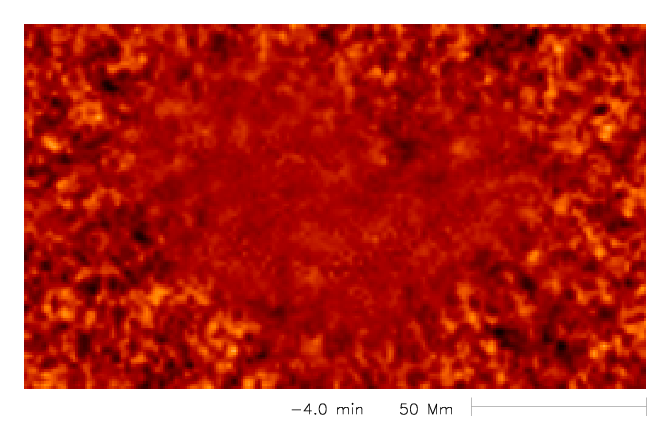

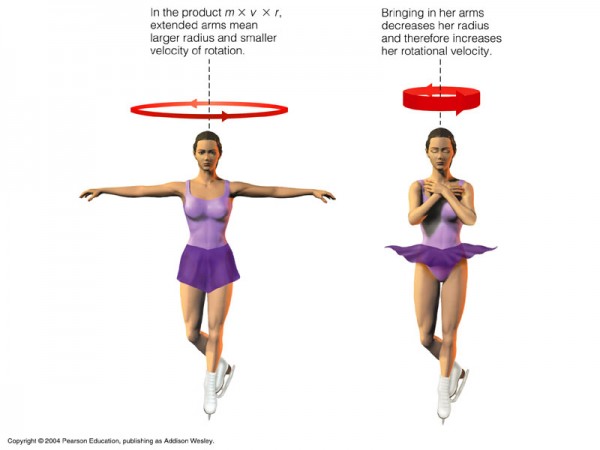
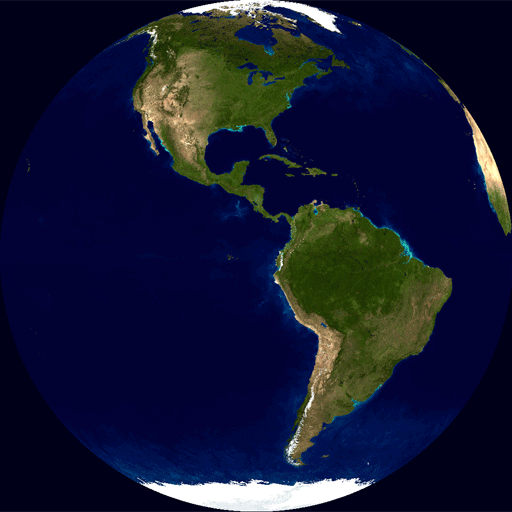
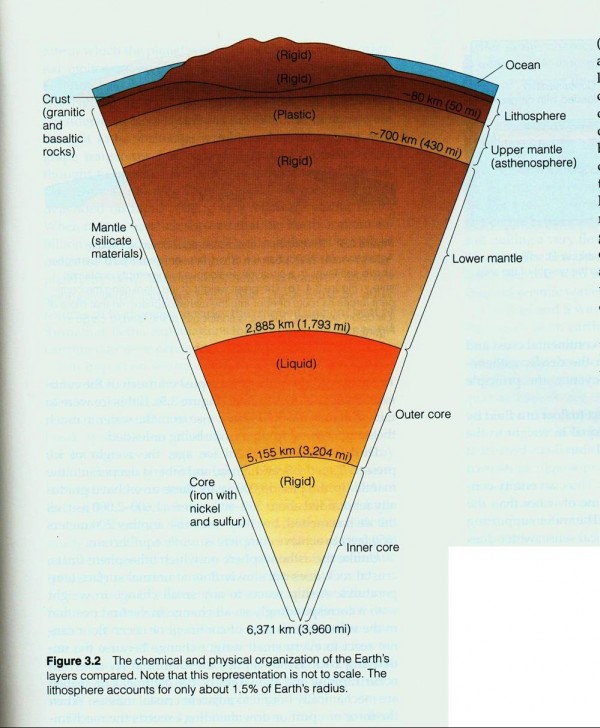
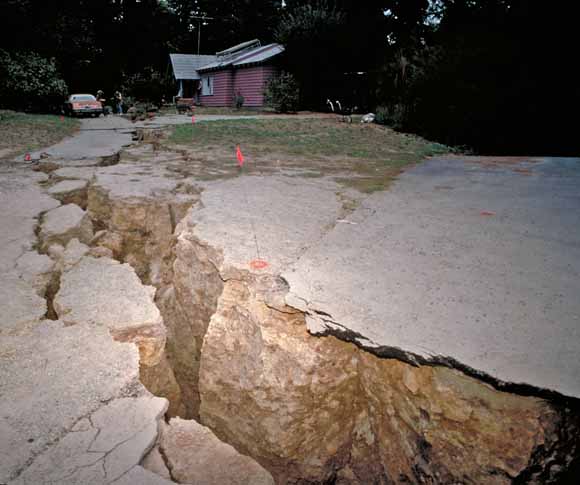
Ethan, did you mean tsunami? Tidal waves have a different mechanism:-)
Yes, and thank you, and fixed!
:-) I just love reading your blogs my friend.
Great work here, Ethan. Thanks.
Hi Ethan,
You really like writing about this subject, the previous post about it was in march 2011.
http://scienceblogs.com/startswithabang/2011/03/14/why-physics-gives-us…
About the physics:
I think it's worthwhile to distinguish between slow buildup of elastic potential energy, and immediate release of that energy. Example: a steel cable that snaps when stressed to its breaking point. All the energy is released in an instant, and the two ends of the cable recoil with a terrible speed, killing anyone in its path.
What caused the ends to fly at lethal speed? Obvious: the tension in the cable!
Of course, the *buildup* of elastic energy was due to the force that was stressing the cable. But that force did not directly cause the ends to fly, the in-between stage of elastic potential energy buildup is essential.
Likewise I argue that the immediate cause of earthqueake energy release is energy stored in elastic deformation of large sections of tectonic plate.
I agree of course that it's also worthwhile to step it back and identify the force that causes the buildup of elastic energy in the first place.
My point is: if you step it back then you should describe all the steps. No skipping! Gravity plus temperature differential gives rise to convection. Convection exerts a dragging force upon the tectonic plates. Plates deform, building up elastic potential energy. When the plates slip elastic potential energy is released.
You mention in you posts that in the process of going through an earthquake the Earth gains some angular velocity (shortening of the length of day in the order of microseconds.) As we know, when a rotating system contracts its kinetic energy increases (Angular momentum is *conserved*; rotational kinetic energy *increases*)
So: during an Earth-rotation-rate-changing-earthquake the gravitational contraction of the Earth is doing work.
Here's my point:
I argue that all of that work goes to the increase of Earth rotation rate, not to the quake!
I argue that *during the quake* the energy of the seismic waves comes entirely from the release of elastic potential energy.
On the other hand . . . .
"Harbo(u)r wave" isn't really any better at all; they don't much care whether it's a harbour where they hit or not.
There's a body of work out there concerning heat transfer from the core to the rest of the universe driving some plate tectonics.
The heat being generated at the core can't be explained completely by gravitational collapse, a good portion of it probably also comes from radioactive decay. The current thinking in the discussion is that the proportion is roughly 50%.
Cleon,
There are, of course, intermediate steps, and I have focused on the connection between the fundamental cause of it all -- gravitation -- and the end result: the earthquake. This is immediately the obvious cause of the entire thing, as turning off gravity at any moment would completely eliminate the need for a release of this built-up stress.
The details are magnificently interesting. As was pointed out to me by a geologist (thanks, Reanna), there is:
Undoubtedly, this is also true. However, it is vital that you recognize the flaw in your own argument, which you can prove to yourself by looking at the effects of tremors and aftershocks. Even though these are "earthquakes" in their own right, they, too, speed up the Earth's rotation rate with each one. This is not simply the release of elastic potential energy, but the rearrangements of incredibly large pieces of the Earth itself, due to -- yes -- work done by the gravitational force.
I will admit that my answer is incomplete, of course, but one only has so much space, time, energy, and level-of-detail to go into. :-)
I also think this is putting the cart before the horse, so what Teunissen (#5) said. I've never heard of anything but convectionally driven plates or local magmatic movements as responsible for quakes. [ http://en.wikipedia.org/wiki/Earthquake ]
Mantle convection is certainly driven by remaining gravitational sorting (differentiation) as it heats the interior and, yes, change the Earth inertia, but that happens over many millions of years.
So the inertia change is "a change of opportunity", or at least is how I've always understood it. Else we would expect stresses to build purely from shrinkage (and conductive cooling), and that would tend to lock subducting plates and what not. But the overlying dynamics is plate tectonics, not sorting and shrinkage of static plates.
That article amends the model though, since it claims that ~ 10 % of the released energy goes into seismic waves. The rest also goes into fracture growth and frictional heat.
Yes, without gravity we would have no planet. And we would have no elastic energy buildup because we would have no convection.
But other than that, I don't see how you could say that convection and its forcing is caused by gravitational sorting alone. Convection is thermal, and half of the thermal energy today comes from radiactive sources.
Then this is immediately the obvious cause of half of the thing, as turning off radioactivity at any moment would completely eliminate the need for a release of half of this built-up stress.
The last part is confusing. How is tremors and aftershocks not caused by electric potential energy release? And even if not, how does that affect the simple release of the main quake elastic potential energy?
Maybe I should put it this way on the last part: tremors and aftershocks causing inertia changes doesn't affect how the quake would do the same. I think we all agree on that part.
We're still left with the rather awkward question of how the gravity arises in the first place?
Ethan, does that mean that ocean floor spreading will lengthen the day? Has this been measured.
Thanks for the blog I read it regularly.
Alan
I've also seen the freezing of the molten part of the iron core as an energy source. Of course that's not primordial either, since presumably core melting came from impacts (ie gravitational potential energy) and radioactivity.
Scott's hint above that maybe Ethan needs to read some basic geophysics textbooks isn't a bad one. ;)
Balthus, yes.
Or at least it has been measured to happen in past earthquakes.
Go google for it.
"We’re still left with the rather awkward question of how the gravity arises in the first place?"
http://en.wikipedia.org/wiki/Gravitation
There you go.
"But other than that, I don’t see how you could say that convection and its forcing is caused by gravitational sorting alone"
I believe this is based on the fact (and it IS a fact) that less dense materials will rise in a gravitational field.
Convection happens when MORE DENSE materials fall and LESS DENSE materials rise due to the cooling of the higher stuff and the heating of the lower.
It's a little sideways, admittedly.
Would tidal friction *lengthen* the day (slowing rotation of the earth)?
1/ I would have thought that the Earth day will *gain* microseconds as a result of tidal friction.
2/ "Harbour-wave" is of course not a good description for tidal waves, but as it is written "Tsunami" people can ignore its wrongness and instead bathe in the warm glow of having used a trendy foreign word.
"Tidal Wave" is of course an excellent description for what happens when a sudden and unscheduled tide appears to occur, accompanied by waves.
"Harbour wave" on the other hand is almost entirely without merit as a description for the same phenomenon.
Thank you 'Wow', I've looked and looked and I cannot find the description of how gravity arises in that wiki page.
There are certainly descriptions of how it works, but not of how it is created. We know that if we put mass or energy here and mass or energy there, there will be a(n almost) predictable force between them, but I don't see an explanation anywhere for how it is brought into existence.
I like this though: http://en.wikipedia.org/wiki/Gravity_as_an_entropic_force
One even prefers the entropy idea to the idea that gravity did not exist at all billions of years ago, then a type 4 civilisation, lazy as only a top predator can be, felt it was too much effort to chase it's food so it rigged up the whole universe with a groovy new force of attraction between all edible things (mass and energy) so our lazy type 4 friends could just sit there and wait for the food to simply fall into their laps (or 'singularities', as we call them).
Yes you do.
Mass.
It arises from Mass.
I.e. how it arises.
"we put mass or energy here and mass or energy there" that's how it's brought into existence.
Yeah, Goddiddit.
Why avoid the simplest explanation? When a spring is compressed it accumulates energy and if released suddenly the energy that was accumulated in a long period of time is released suddenly with destructive consequences, that is exactly what happens in an earthquake. Changes in the rotation of the Earth are due to changes in position of large masses relative to the center of the Earth.
Well, for better or worse, "tidal wave" does mean "tsunami" as well as other things, but it is better to refer to the earthquake/etc wave thing as tsunami and that other thing as tidal bore.
I'd be interested in more discussion of the possible effects of rebound on earthquakes. We only see slow and steady rebound these days, but if we do see mass glacial wasting there may be much more dynamic and higher amplitude crustal rebound in our future, and it would be nice to have done some thinking on that. Should there be tsunami warning devices set near Greenland and Western Antarctica over the next decade?
All I can see is, paraphrased:
Mass causes spacetime to curve and masses just roll together like balls rolling down a 3-D slope in 4-D space-time.
How does mass arise? How does energy arise? How does space-time arise?
The gravitational potential energy of all these separate bodies was originally supplied by the 'big bang'.
To explain how gravity arises properly, we need to explain how mass, energy, space-time and the big bang all arose, surely?
If I've got hold of the wrong end of the stick here, I'm more interesting in knowing how the stick arises, than which end is right.
"How does mass arise?"
OK, so now, having failed to make shit up, you're changing the question.
GTFO, troll.
We have the day lengthening from tidal friction of the Earth/Moon/Sun - the Moon raising tidal humps on the Earth and the rotation of the Earth effectively dragging the Moon ahead, raising its orbit and energy.
Now within that lengthening, there could also be some tectonic activity that's storing gravitational potential energy from the circulation of the magma. The energy source for this would be the heat generated in the core. So there could be another energy source to consider for earthquakes - the supernova-created heavy elements that are still decaying deep in the Earth.
Greg,
http://www.ndbc.noaa.gov/dart.shtml
Looks like you are correct: The Chileans (and maybe Argentina could help, if they can spare time from greedily eyeing-off potential oil fields around the Falklands) could do with another pair of DART buoys off their Southern coast, while the Canadians and British need to get off their arses and each install a couple of their own.
Hi Ethan, Great blog, but I have to say I think you are wrong on this one. The energy for quakes can't come from gravitational contraction. A simple sum will show why: Average energy released each year by quakes is about 5x10^17 joules (almost all from the most powerful quakes - can be over half from a single 8+ mag quake). The earth has been around for about 4x10^9 years, so approximately the energy released by quakes over that period is about 2x10^27 joules.
Now, contracting the earth by about 1m gives about 2x10^19 joules in GPE - so you can quickly see that the earth would have to have contracted by most of its diameter to produce the energy for those quakes!
In reality the nergy for quakes ultimately comes from the internal heat of the earth, partly powered by radioactive decay, that creates the convection currents that deform the surface of the earth - which then relaxes by quakes.
A quick calc suggests you need to convert about 20 million tons of matter to energy to generate the energy for the quakes over the lifetime of the earth - quite plausible given the mass of radioactive material at the centre of the earth.
"The energy for quakes can’t come from gravitational contraction."
You've just done as the engineers did when they showed that bees can't fly, and Kangeroos can't exist.
Ok Wow, I'm getting it now, having just googled 'how does mass arise' thinking I must have missed something all these years, that the question has been answered, and it seems it hasn't, so wouldn't it be easier to just say 'nobody knows'?
Why the inclination to troll me over this simple question?
I don't feel the need to troll you by paraphrasing cone theory
Oh dear, what could the matter be?
http://scienceblogs.com/startswithabang/2012/09/23/weekend-diversion-yo…
@Wow
"You’ve just done as the engineers did when they showed that bees can’t fly, and Kangeroos can’t exist."
Are you going to add any substance there, and sort of maybe even address the content of my argument, or are you just going go with assertion?
It you read my comment you will see that I lay out an argument for my position. Arguments and evidence are useful things, assertions on their own, not so much.
@Wow
I think your reference to Ethan's post on behaviour on his blog is very approriate. You should even try reading it.
Your comment aimed at me was a clear example of a level 4 contradiction "states the opposing case with little or no supporting evidence" - no evidence at all in this case.
Your attack on Applecat calling hm a troll and using GTFO was clearly a level 7 example of pure name calling - the lowest level of all. All in all not so good.
Oh dear, seems like there's another white knight charging to the defence of the idiot.
Hey, there's a windmill over there, try that.
Waterburger, people "proved" kangaroos can't exist by taking how much energy it takes a kangaroo to jump up and down like that and calculated that it would take more energy to do that than it could get from moving like that to forage, hence they can't exist.
You are managing the same "proof" of "The energy for quakes can’t come from gravitational contraction.”.
Your appalling attempt at "proof" precludes any possibility of you either understanding or accepting how this manages to be, so I, personally, cannot be arsed. You've been given clues, grasshopper. Follow them or not.
Oh Dear.
More insults (level 7) and more complete absence of even an attempt at dealing with my argument,. all mixed up with ad hominem attack (level 6).
What about just trying to adress the maths in my argument and leaving the insults to one side for a moment or two?
Waterbergs,
I don't know how you did your calculation, but if I want to release 2 x 10^27 Joules of energy over the history of the Earth, that corresponds to a gravitational contraction of about 60 meters in radius over that time, or about 0.001% of the Earth's radius.
I'll admit that radioactivity in the Earth's interior is a sizable contribution that I glossed over -- probably on the order-of-magnitude of 50% -- but gravitational contraction is just as important over those long timescales. Maybe you'll get a follow-up post to sate your geophysics needs (you too, Cleon) tomorrow?
You write: "we lose about 14 microseconds from the 24-hour-day each year just due to tidal friction from the Moon-Earth-Sun system".
Shouldn't that say that we gain, rather than lose? That is, the friction is slowing the rotation of the Earth, thus lengthening the day.
Ethan,
Thank so much for addressing my question calmly and without the agression I got from some quarters, much appreciated. Does the 60m calculation include the energy required to compress the earth by this amount?
Yeah, I'm so chagrined, waterberger. Don't like it? Don't be an idiot.
Simples.
I note that you didn't, despite getting a canned response rather than having to, you know, WORK IT OUT YOURSELF, you haven't actually gone "So my assertion wasn't correct, huh?".
Waterbergs (and Cleon),
Think you'll have to wait a while for the geophysics follow-up. Too many astronomy-related things going through my head today, and one of them is going to have to come out this afternoon!
@Wow if you follow that link to the diversion page, you'll find yourself arguing with an imaginary friend about Type 3 civilisations and you're just as angry with your imaginary friend as you are with all the real people on this thread.
I rather enjoy reading this blog and in a way, it's helping me to come to terms with why I may have flunked astro back in 1990.
Do you remember the problem with Astro back in 1990 Wow? I'm struggling to estimate your age. I'm sure it matters, as it seems we must get personal before we can progress with the business of not being able to explain things to a five year old and therefore possibly being a little muddled ourselves?
No, If I were to follow that I'd be sent on a wild goosechase to some whacked-out neo-hippy crystal woomancer BS and wasted a segment of the only life I'll get to live, so no, I refuse to enter into your own delusion.
Good, so let's get back to the task in hand, I seem to recall the minimum amount of energy needed to change 1 bit of information is a function of temperature, and things were rather hotter 13,8 billion years ago.
Surely if we go back far enough, we'd get to a point where it would be impossible to describe a universe with beings with fingers and eyes because the amount of energy it would take to simply describe it would be more than could be contained it it?
Just a constraint, you know.
No good.
You're taking a shit in someone else's living room because you can.
Go here:
http://scienceblogs.com/startswithabang/2012/09/23/weekend-diversion-yo…
Where your off-topic bollocks is at least allowed to hang.
you didnt answer my question
yea you didnt answer his qustion thank you for your time
thank you all
hey here is a qustion help me please What is the source of energy for an earthquake?
Megan,
You might try reading the article. Your question is answered there. Short version: the energy for an earthquake comes from the gravitational potential energy of the earth.